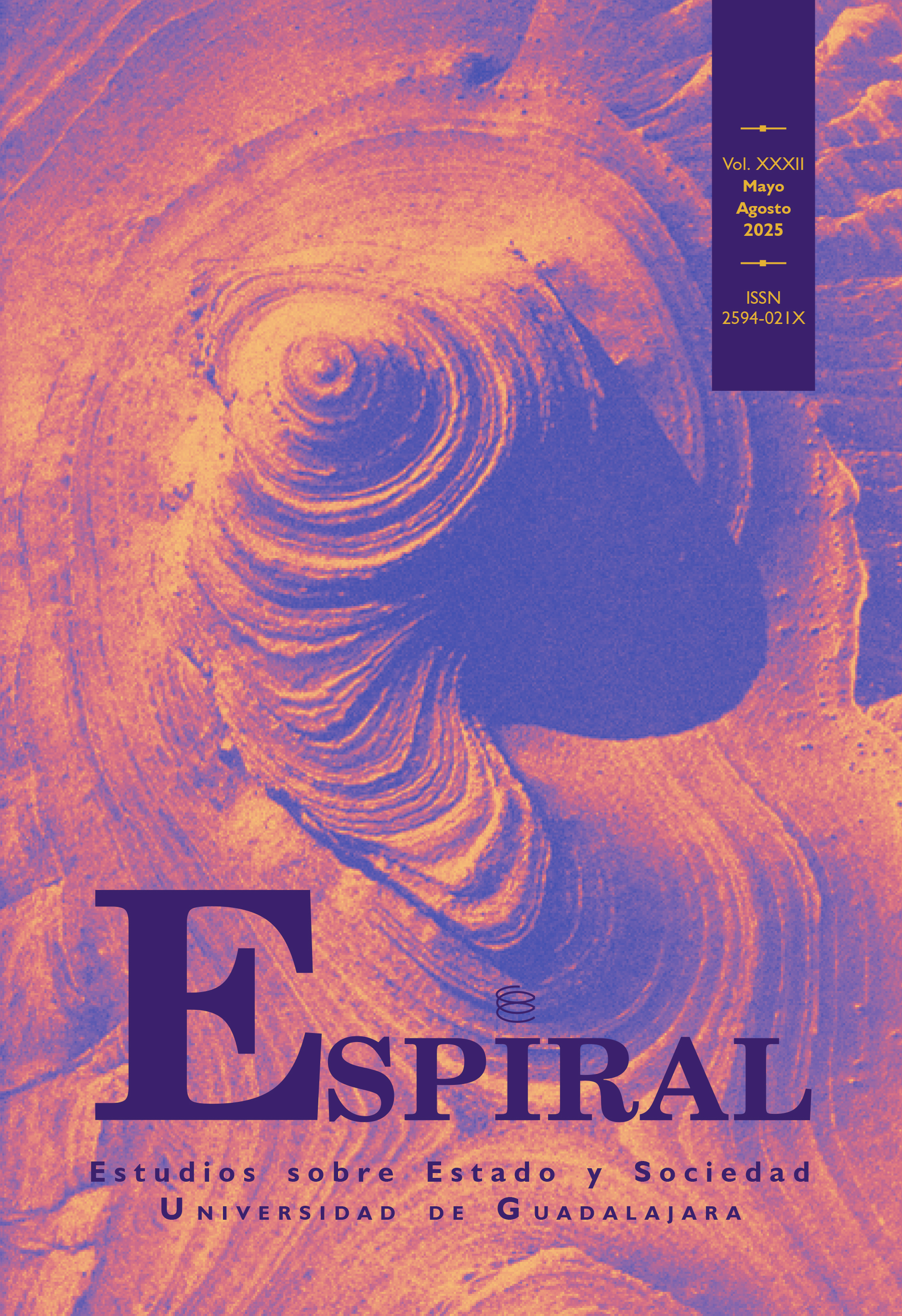Memoria, espacio y violencia estatal: la construcción del sitio de memoria Circular de Morelia 8
DOI:
https://doi.org/10.32870/eees.v32i93.7401Keywords:
Memoria colectiva, espacio, contrainsurgencia estatal guerrilla, Dirección Federal de SeguridadAbstract
Memory constitutes a cardinal sphere to understand how societies are built, changed, and reproduced. The Morelia 8 Circular memory site, located in Mexico City, represents the first state exercise in Mexico dedicated to framing and erecting the memory of the period of state counterinsurgency in the 1970s in public space. This article aims to analyze its construction's political and social conditions, the underlying axiological and political intentionality, and the problems that have existed for its constitution and maintenance. Several in-depth interviews were conducted with its founders and managers, as well as with some members of groups of relatives of missing persons and survivors of state violence. As will be seen, collective memory is a field marked by dispute and conflict and is an open process conditioned by the present political times.Downloads
References
Aguayo, S. (2014). La charola: una historia de los servicios de inteligencia en México (1a ed.). Ink. https://search.worldcat.org/title/49981101
Da Silva, C. L. (2003). Apagón en el ingenio. Escrache en el museo, tensiones y disputas entre memorias locales y memorias oficiales en torno a un episodio de represión en 1976. En P. y J. E. Del Pino (Ed.), Luchas locales, comunidades e identidades (1a ed., pp. 63–105). Siglo XXI.
Espinosa, M. F. (2023). Las comisiones de esclarecimiento y la consolidación del campo de la historia del tiempo presente en Colombia y México. Caravelle, 53–66.
Gillis, J. (1994). Introduction. En J. Gillis (Ed.), Commemorations. The politics of national identity (1a ed., pp. 3–27). Princeton University Press.
Halbawchs, M. (2004). Los marcos sociales de la memoria (1a ed.). Anthropos Editorial.
Halbwachs, M. (2008). La memoria colectiva, una categoría innovadora de la sociología actual (1a ed.). Proyecto A Ediciones.
Harvey, D. (2017). El cosmopolitismo y las geografías de la libertad (1a ed.). Akal.
Huffschmid, A. (2012). Los riesgos de la memoria. Lugares y conflictos de memoria en el espacio público. E. En A. Huffschmid & V. Durán (Eds.), Topografías conflictivas. Memoria, espacios y ciudades en disputa (1a ed., pp. 369–389). Trilce.
Huyssen, A. (2003). Present pasts: urban palimpsests and the politics of memory (1a ed.). Stanford University Press.
Jelin, E. (2002). Los trabajos de la memoria (2a ed.). Instituto de Estudios Peruanos.
Klare, M., & Stein, N. (1978). Armas y poder de America Latina (1a ed.). Era.
Lussault, M. (2015). El hombre espacial: la construcción social del espacio humano. Amorrortu Editores.
Pollack, M. (1989). Memória, Esquecimiento, Silencio. Estudios históricos, 2(3), 3–15.
Ricoeur, P. (2010). La memoria, la historia y el olvido. Fondo de Cultura Económica.
Roseberry, W. (2002). Hegemonía y lenguaje contencioso. En J. Gilbert & D. Nugent (Eds.), Aspectos cotidianos de la formación del Estado (1a ed., pp. 213–226). Era.
Vicente, O. C. (2019). Política de contrainsurgencia y desaparición forzada en México en la década de 1970. Estudios Interdisciplinarios de América Latina y el Caribe, 30(1), 43–71. https://eial.tau.ac.il/index.php/eial/article/view/1597
Vicente Ovalle, C. (2023). Instantes sin historia: la violencia política y de estado en México (1a ed.). UNAM. https://www.tiendaenlinea.unam.mx/productos/Libros/INSTANTES-SIN-HISTORIA-LA-VIOLENCIA-POLITICA-Y-DE-ESTADO-EN-MeXICO/1869
Downloads
Published
How to Cite
Issue
Section
License
Open access policy
Authors who publish in this journal accept the following conditions:
In accordance with the legislation of copyright, Espiral Estudios sobre Estado y Sociedad recognizes and respects the moral rights of the authors, as well as their equity ownership, which will be given to the journal to for diffusion on open access. Espiral does not charge authors for sending and processing their articles for publication.
The authors are able to engage in independent and additional contractual agreements for the non-exclusive distribution of the article’s version published in Espiral (for example, to include it in an institutional repository or publish it in a book) provided that they clearly indicate that the work was published for the first time in Espiral.
For all of the above, the authors (s) must send a format of a letter of transfer of property rights on the first publication duly completed and signed by the author (s). This format can be sent via email in PDF file to the email espiral.udeg@gmail.com. (Letter of transfer of author property rights)
![Espiral Estudios sobre Estado y Sociedad [eISSN: 2594-021X]](https://espiral.cucsh.udg.mx/public/journals/10/pageHeaderLogoImage_es_ES.jpg)

